The Leitz Auction at Wetzlar is now looming large and I shall be flying over to attend the event on June 11. This is my second article on the more interesting sale items and you can find the earlier piece here.
The purpose of these articles is not to advertise the auction, but to show some very interesting cameras and other photographic equipment which are passing before our eyes for a very short time, before going to a new home. As with my previous articles on auctions, I have added material and comments which are not in the catalogue, in order to give a broader picture and context to the various items.
Most of the items I have chosen are not those that either can or should be used in public. Some are just prototypes and some are wooden dummies. Many photographers do not approve of people buying cameras which cannot be used, but people have collected things as artefacts for centuries, even before the dawn of photography, and it is not surprising that some people just want to collect historically interesting and rare cameras.
I have chosen the items for this article, seven out of over 400 items in the catalogue, because they are interesting and different and not necessarily because they are the most valuable items.
A Leica for Snapshots?
Many Leica users consider themselves to be serious photographers, and would never admit to taking snapshots. But many years ago Leitz trialled a Snapshot Leica which in essence was a Leica Standard with no built-in rangefinder, but with a 35mm viewfinder and a special 3.5cm f/4.5 Leitz Elmar lens with the code name ELROO.
Nowadays, this optic would be described as a pancake lens. It has click stops for focus, no coupling for a rangefinder, no serial number and a separate lens hood.
You could use a separate rangefinder, but that would not chime with the spirit of this highly pocketable (they had big pockets back then!) camera. This one really was intended for scale focus.
The chrome version of this lens has two knobs to enable mounting and dismounting the lens. There is an earlier version of the lens in nickel with no knobs which must have been a nightmare to mount on the camera because it was so flat.
The ELROO in question is said to come from 1933 while the Standard camera is from 1936. In its 1935 UK Catalogue, Leitz advertised the Snapshot camera for a mere £13, but the item was never actually sold. At that time the Leica II and III cameras were around £26.10s and £30.10s respectively, with a 5cm Elmar lens, so this one would have been much cheaper if it had reached the market.
The irony is that today this very rare prototype is much more expensive than any normal II or III from that era.
This is item No 26 in the catalogue with a start price of €50,000 and an estimate of €100,000 to €120,000
Mirror, mirror at the back
The second item is another prototype, this time a large 60cm (600mm) f/5 mirror lens from 1949. With the hood retracted, the lens is 37cm (around 15in) long and has a diameter of 18cm (c7in) and weighs 5kg.
The lens was designed to be used via a Visoflex and bellows with a vertical eyepiece. The second photo shows the LTM mount, which enabled the camera to be mounted on the lens rather than vice versa. Needless to say, the tripod mount on the camera was essential.
The lens was designed by Albert and Mohr, the former being Wilhelm Albert who was Barnack’s righthand man. Albert took photos of various test pieces over the years and when he retired he presented these in the form of a diary to the Leitz family. This lens is in that diary.
The diary has been recently republished by the German Leica Historical Society and Lars Netopil. I have done a review of that diary for UK Leica Society magazine and all I can say for now is that there is a much larger, and equally unique, Leitz lens which will appear in that review.
There was only one example of the 6cm lens ever made and it is this one, No.790001. Accordingly, a very high price is expected. It is item No 88 in the catalogue and will start at €100,000 with an estimate of between €200,000 and €300,000
Guillotine shutter
For decades, Leica cameras had horizontal cloth shutters. In 1968, Leica built this experimental M camera with a vertical-movement metal shutter. The test camera, with a speed dial on the front near the position of the slow-speed dial used to sit on the old III LTM models, was around 12mm narrower than the normal M models at that time.
This work was the result of an idea of Dr Ludwig Leitz and was realised by Leitz designer Willi Franke. In common with a number of other items in this auction, the prototype comes with a set of technical drawings
Leica did not introduce a vertical metal shutter on an M until the M8 appeared in 2006, but such a shutter did appear on the R3 in 1976, so the experimental work with this item may have had some application in the design work for that camera. Indeed, some of the technical drawings do show what looks like an SLR-type camera.
This is Item No 89 in the catalogue. It will start at € 15,000, with an estimated range of €30,000 to €40,000.
All that glitters
It has become quite common in recent times to have a charity lot in a camera auction and Leitz Auction is no exception to this. The charity lot this time is a Leica MP (modern type) in gold with ostrich leather covering.
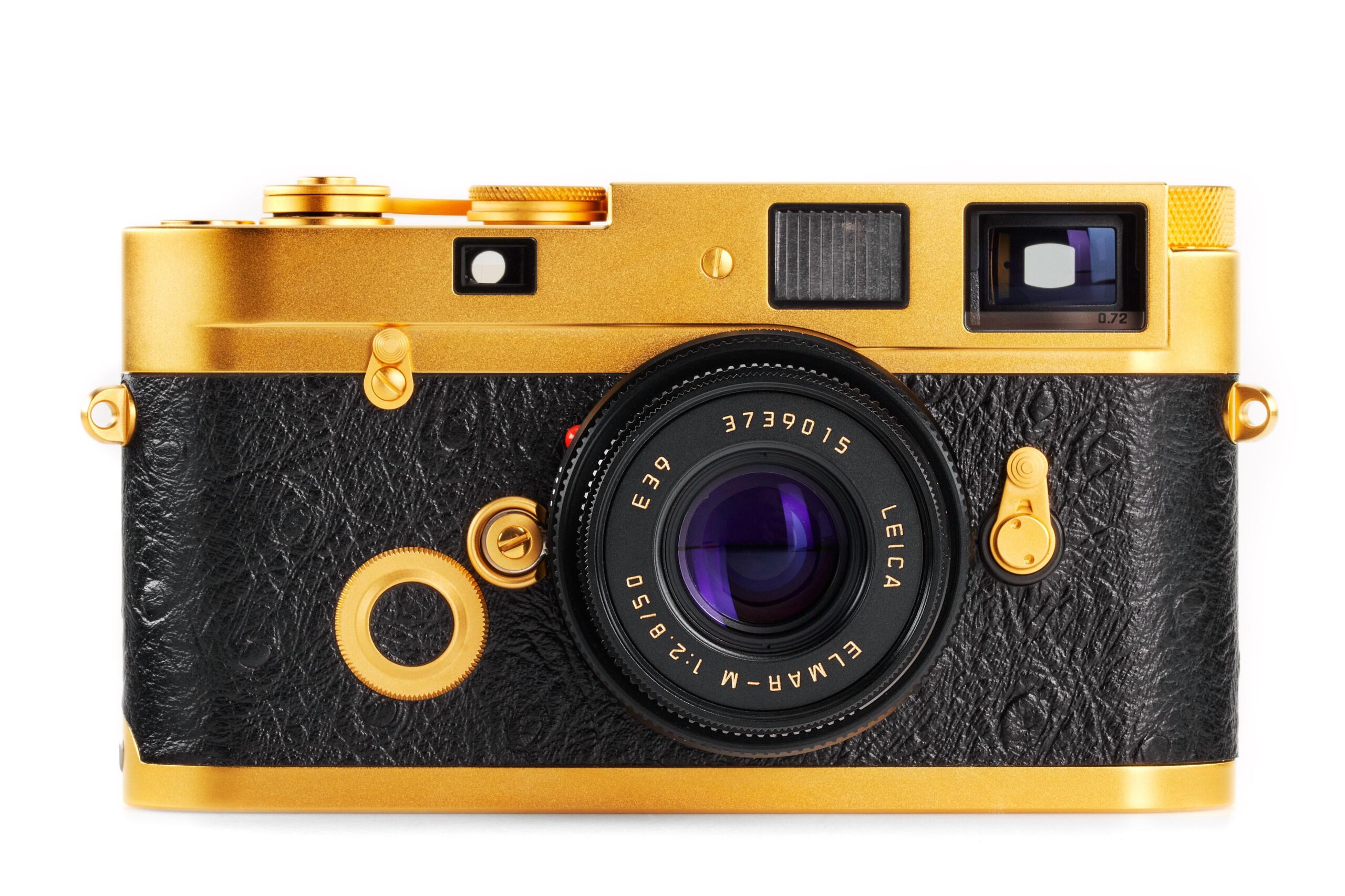
The camera comes with a special black 50mm f/2.8 Elmar lens (modern type) with gold and red lettering. There are no particular exceptional technical points, but the camera has its serial number hidden under the wind-on lever.
The camera and lens are being auctioned to aid an unspecified non–profit organisation in Austria and Germany
This item is No 147 in the catalogue. The start price is €8,500 and the estimated range is €16,000 to €20,000.
16mm is just for cine?
Many readers here will remember 8mm and 16mm cine film, which is actually making a comeback among young people, digital natives who seek something more tactile and tangible to use as they exercise their creative talents.
35mm may have seemed the ultimate medium for Kleinbildkameras, but there was always a quest for something even more capable of delivering a very compact camera. Well, Leica did try in the late 1950s to produce a camera which used 16mm film and what is on sale in this auction is a large lot, including a series of wooden dummies and various test parts, including a retracting lens, top plates, shutters and film housings and cassettes.
The project was stopped after one complete camera was made. It may well have been that the cost of producing such an innovative and highly engineered camera was prohibitive. The other possibility was that the test negatives may not have been up to the quality that Leica expected. I asked a friend who teaches 8mm and 16mm cine photography and she confirmed that still images from typical 16mm film would be well below 35mm film quality.
As with some other lots, this one comes with a series of blueprints and drawings, plus a copy of the German Leica Historical Society’s Vidom Magazine, which shows the only complete Leica 16, which itself is not included in this auction.
This set of items is No 224 in the catalogue and has a start price of €50,000 with an estimate of between €100,000 and €150,000.
Look behind you!
The famous pantomime entreaty is very apt in regard to the next item, which could well be the most spectacular looking lot in the auction. It is the widest wide-angle lens ever made, the fabled Nikon 6mm f2.8 Fisheye-Nikkor lens.
This omniscient optic has a field of view of 220 degrees, meaning that it can look behind itself. Photographers using the lens would have to be very careful about where they put their legs and hands. And this would be no mean feat since this monster weighs in at more than 5 Kg.
The set in this auction includes a large carry case and a leather lens cap and, for the very brave photographer, a repair manual!
This special-order item was produced in very small numbers, no more than 200 it is said. It is difficult now to see many practical uses for such a lens, which is a real ‘floorshow’ item. Perhaps it was to show off to the other members of the local camera club or for that special Crocodile Dundee ‘call-that-a-lens?’ moment.[footnote]If this does not make sense, just Google ‘Crocodile Dundee – Call that a Knife’ on YouTube.[/footnote]
The photo shows the massive size of the lens, compared to a Nikon F3 professional SLR. Not the ideal tool for street photography, I imagine.
The photographer using this must also have needed an assistant to carry the box. I can hear some of the posher photographer types from back then calling out “The Fisheye, James (or Jane)” to their trusty caddy.
Anyway, whatever the history, this would be a truly spectacular item to own or, indeed, to use, if only in the confines of your own home or studio.
This one is No 367 in the auction catalogue with a start price of €40,000 and an estimate of between €80,000 and €100,000.
Let us now praise famous men
I first came across the work of Walker Evans many years ago in a book with the above title which was written by James Agee and contained photographs by Evans. The book describes and illustrates the lives of poor tenant farmers in Alabama.
It was the photographs by Evans that caught my eye rather than the text by Agee. The book was the result of an assignment which the duo had done for Fortune magazine.
Prior to the Fortune magazine project, Evans had worked with the Resettlement Administration (RA) and the Farm Security Administration (FSA). I am particularly interested in the photographic work done for the latter by many photographers under the direction of Roy Stryker. It was an excellent example of photography having a real political impact.
In time, Evans himself became a ‘famous man’ and in 1938 he became the first photographer to have an individual exhibition at MoMA ( Museum of Modern Art ) in New York. This was called, appropriately enough, ‘American Photographs’.
The lot in this case consists of a Contax II camera with the famous Zeiss Sonnar 5cm f/1.5 lens and it comes with a later book of photographs by Walker Evans called ’Many Are Called’
The book shows photographs taken on the New York Subway between 1938 and 1941, some of which were said to have been taken with this Contax camera. James Agee wrote the introduction to the book.
There is nothing really remarkable about the camera and lens, which were common items in their day. The only thing which fascinates me is this little table stuck on the back of the camera. Let’s call it ‘this week’s quiz’. I think it relates to film or flash, possibly both. At least I hope it does not mean anything in German, like the last time around!
The value of this camera depends entirely on its provenance, of course. The items are at No 399 in the auction catalogue with a start price of €10,000 and an estimate from €20,000 to €24,000.
If I can find the time, before I go to Wetzlar in June, I will do another piece about quirky items in the general catalogue. For example, there is always wonderful ‘off beat’ stuff in the advertising material section of the catalogue. In this auction, there is quite a range, with anything from an Agfa doll to Barnack’s own 0 Series camera
Read the earlier article in this series
Read more articles by William Fagan
Make a donation to help with our running costs
Did you know that Macfilos is run by five photography enthusiasts based in the UK, USA and Europe? We cover all the substantial costs of running the site, and we do not carry advertising because it spoils readers’ enjoyment. Every amount, however small, will be appreciated, and we will write to acknowledge your generosity.
.

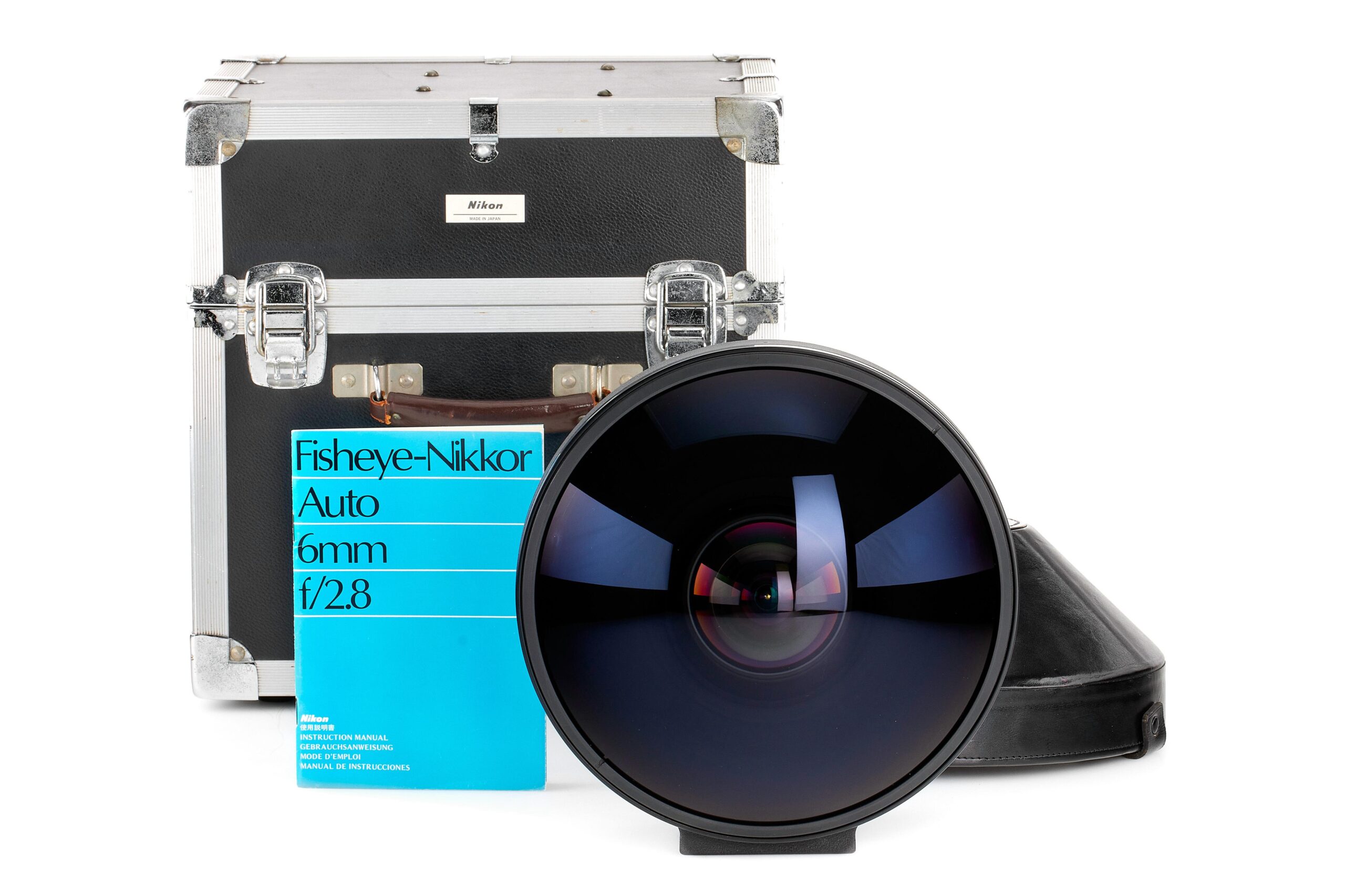
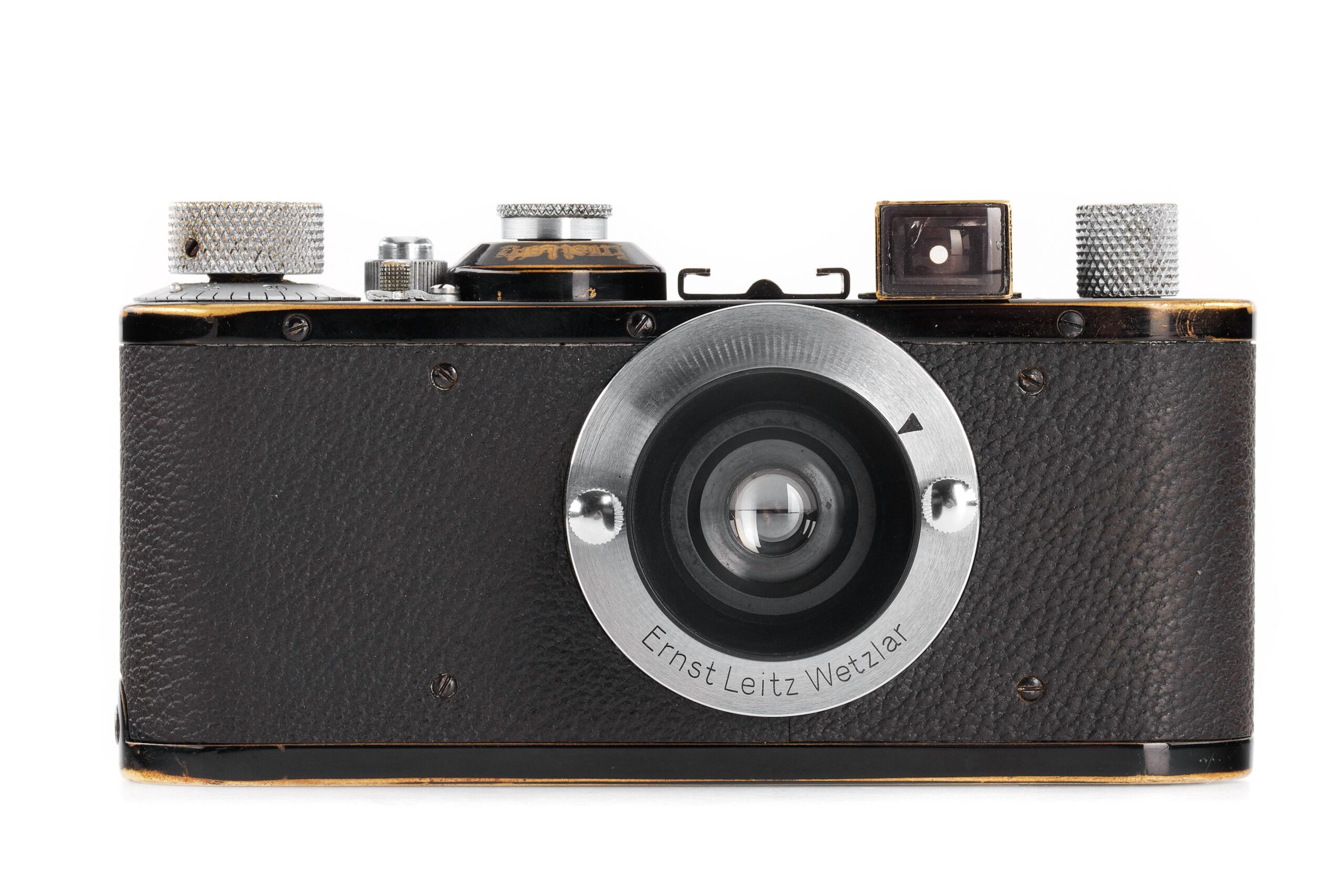
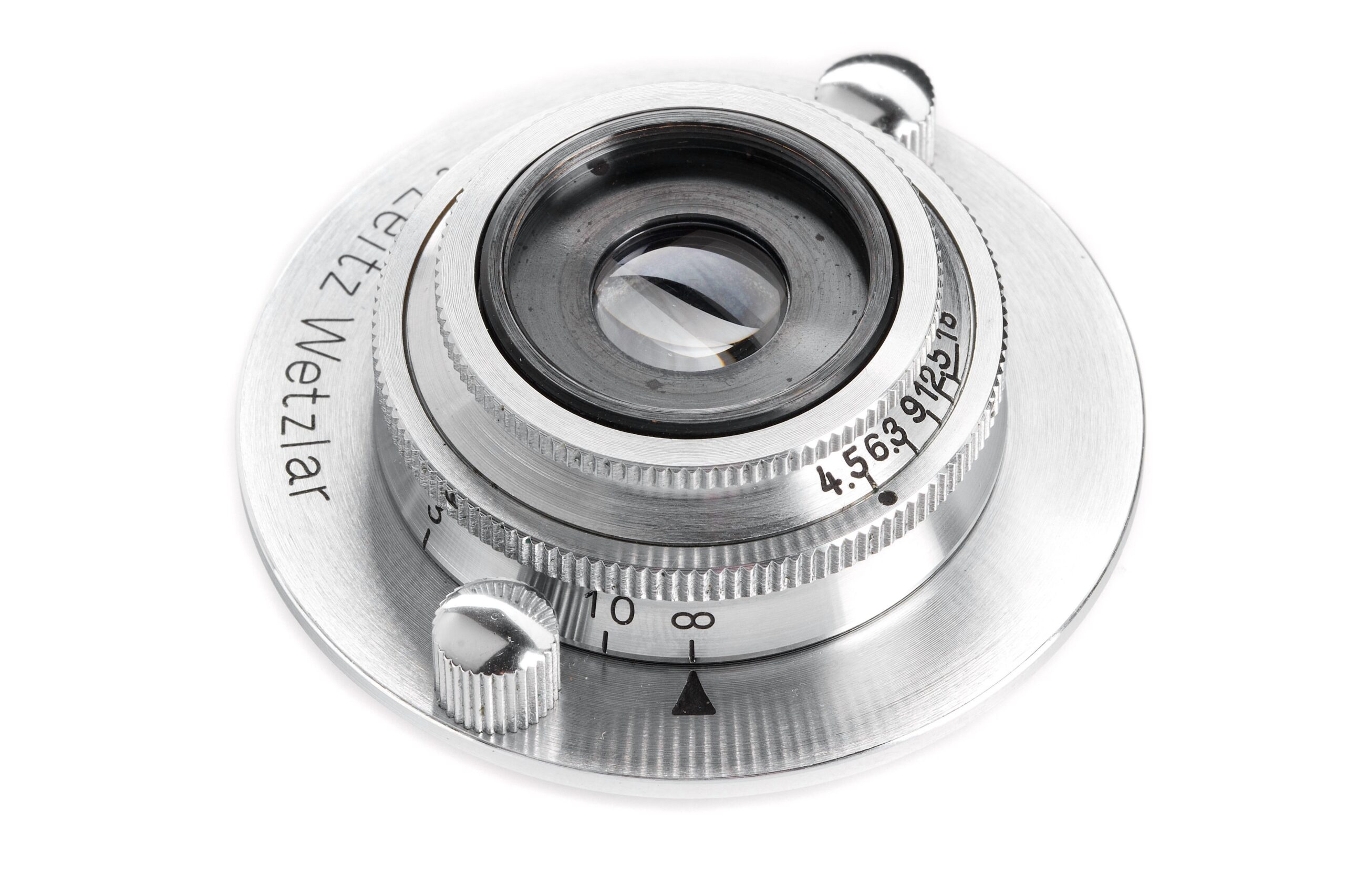
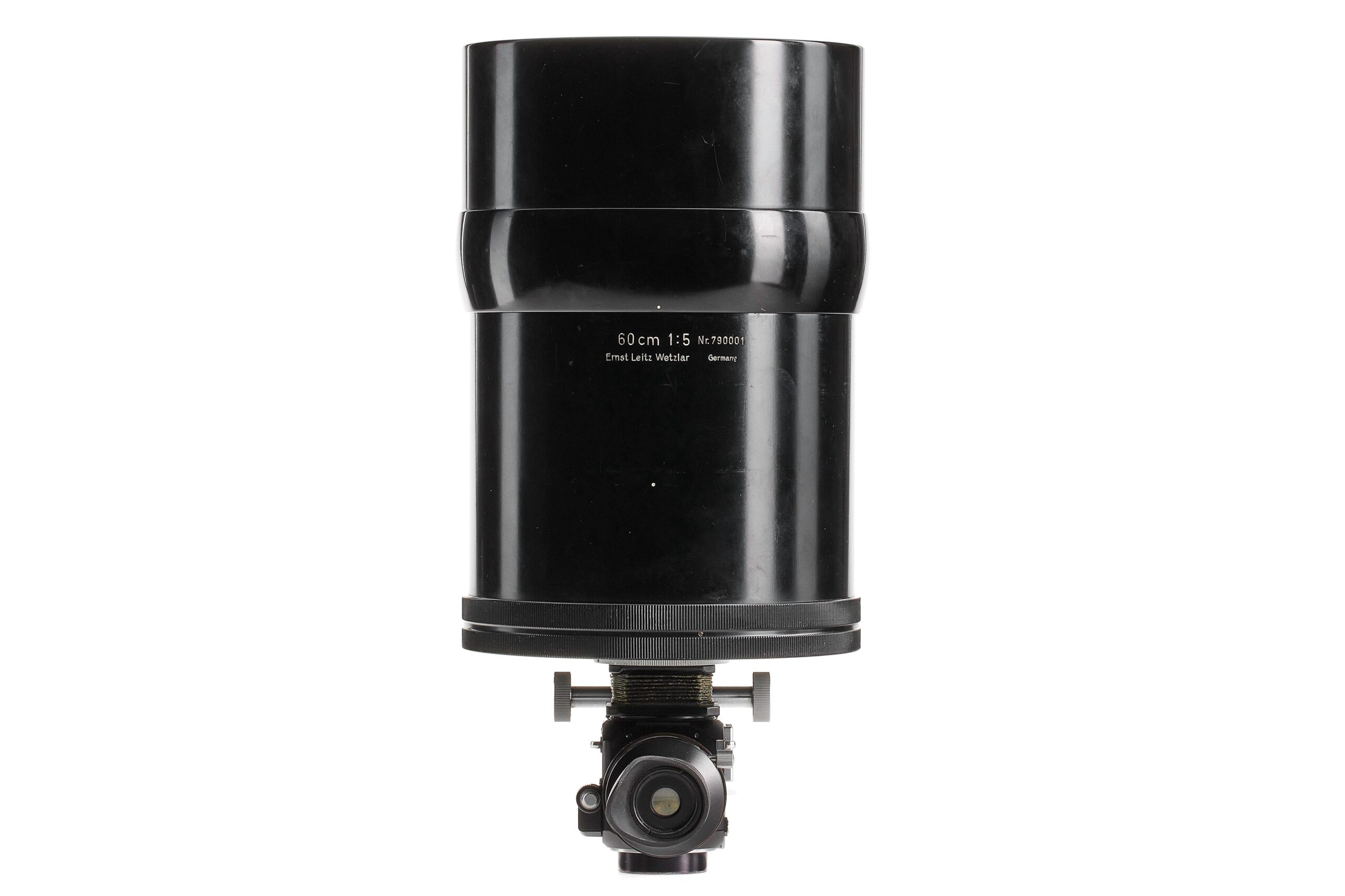
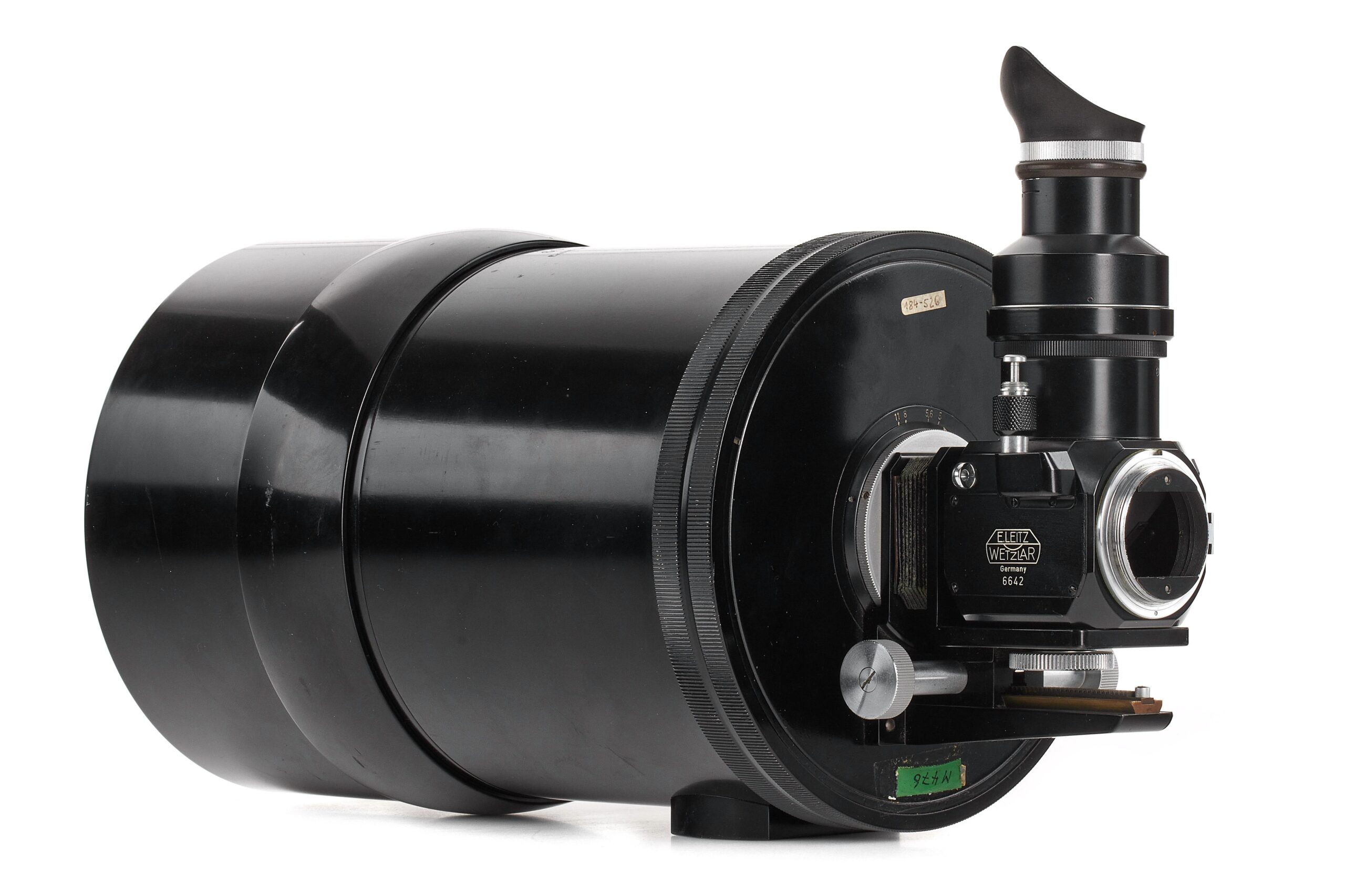
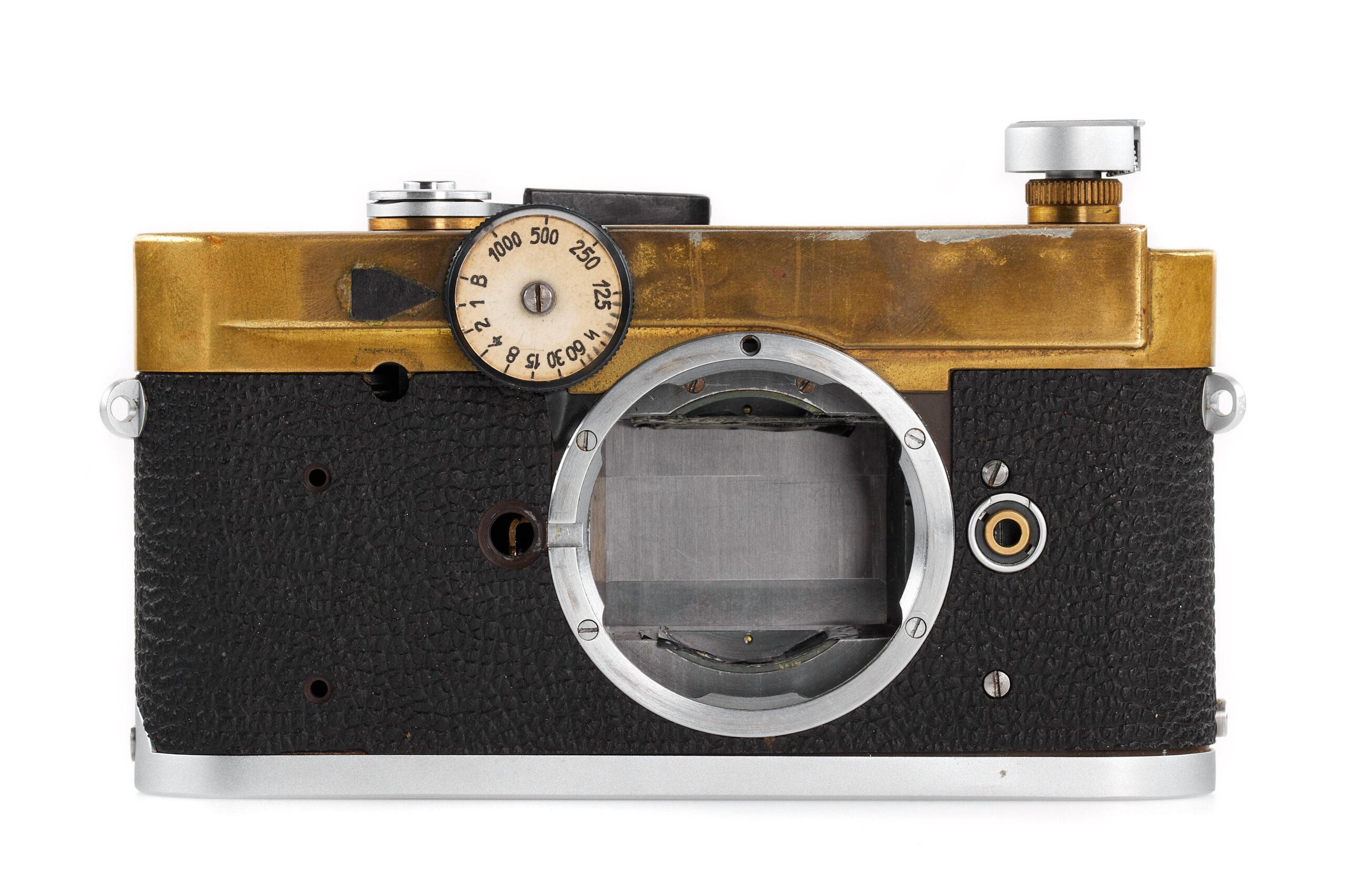
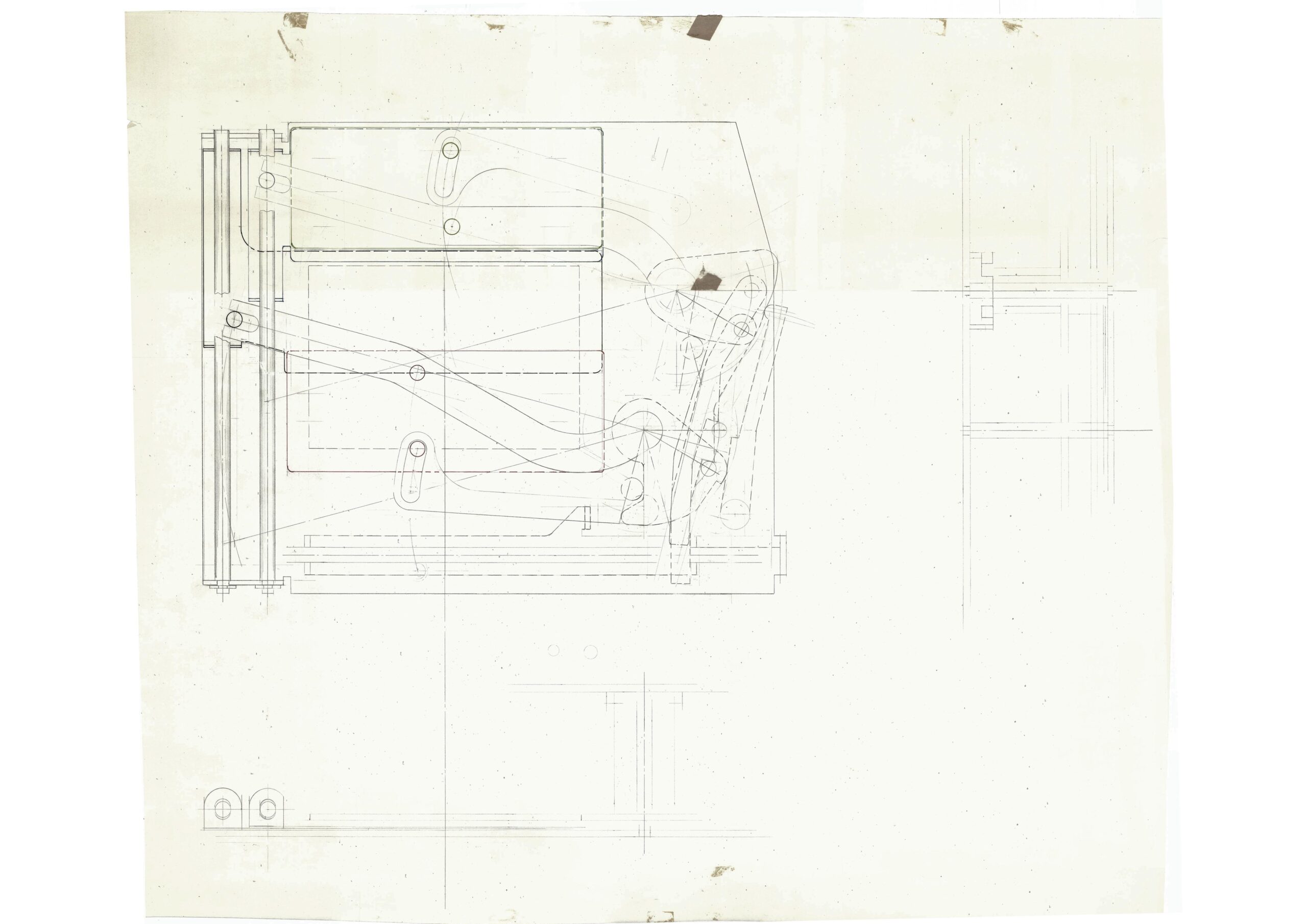
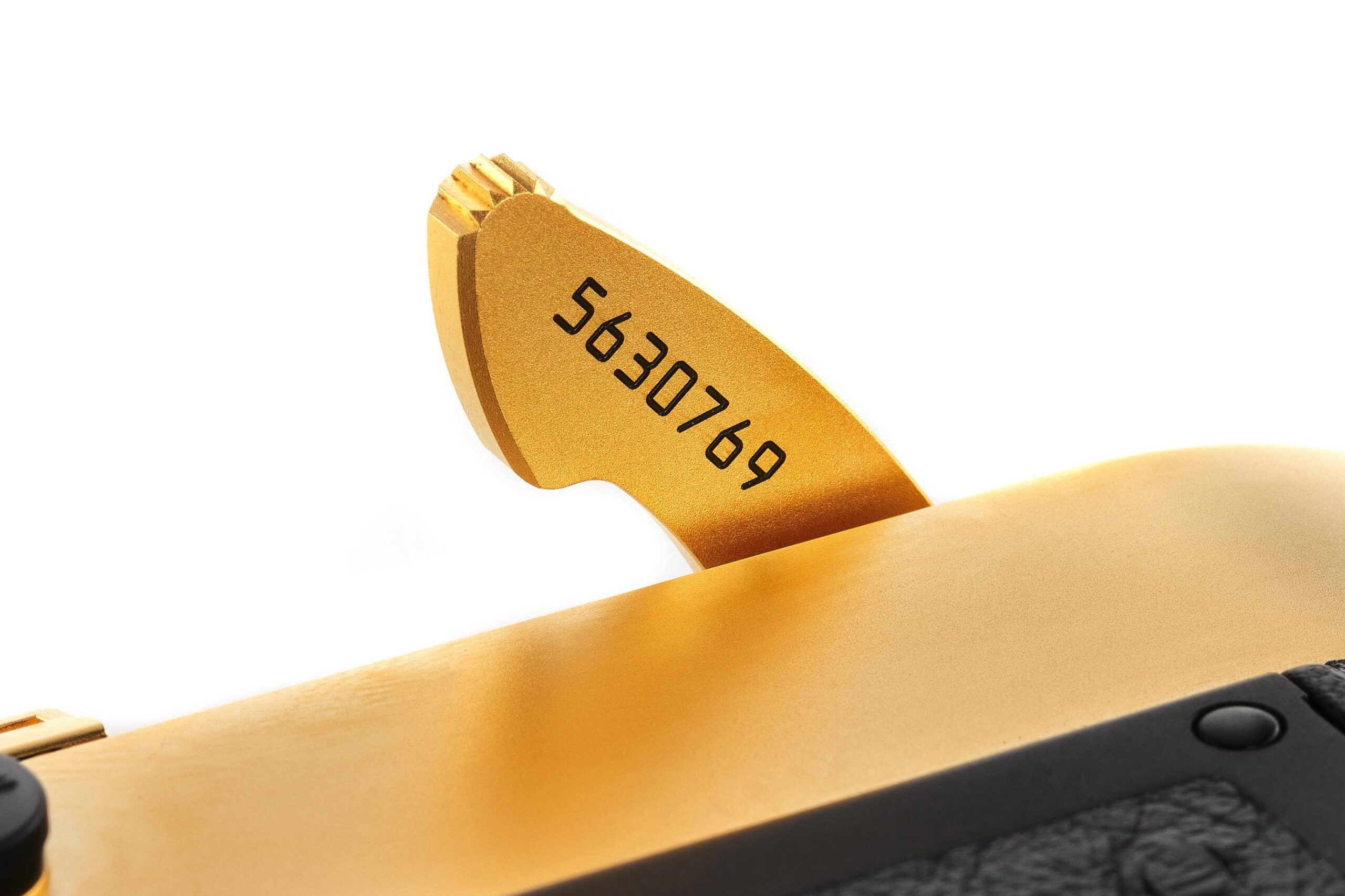
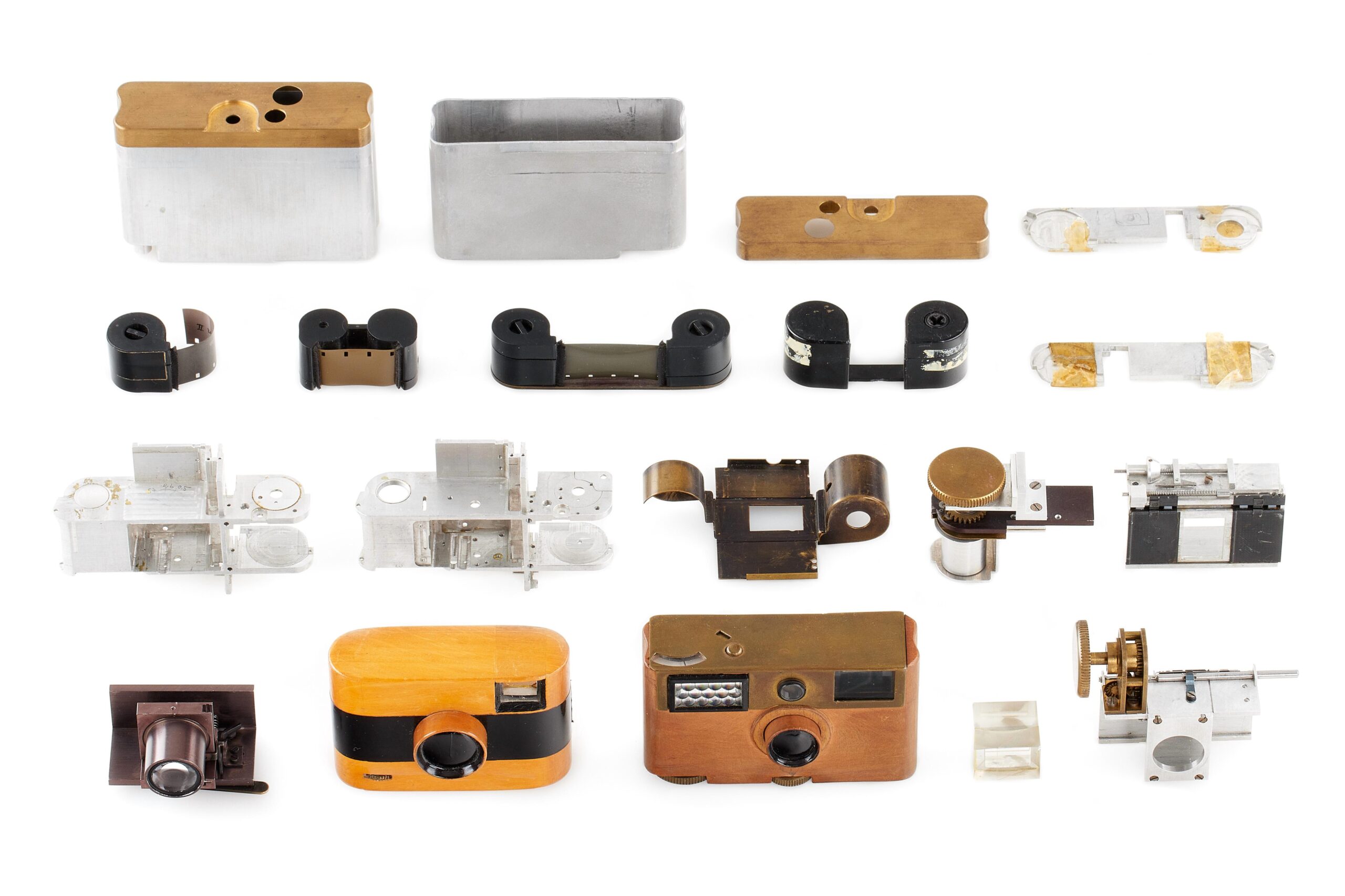
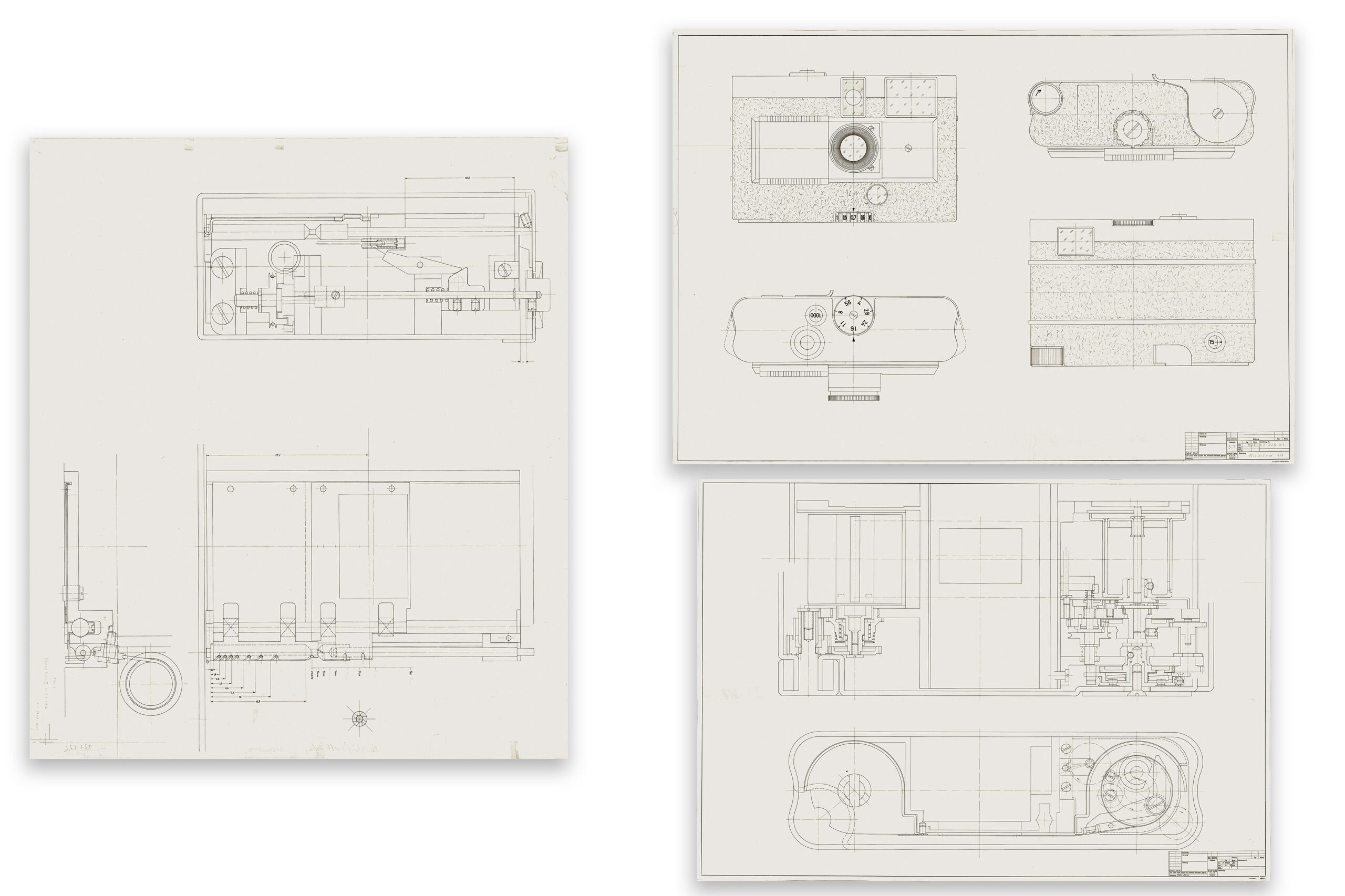
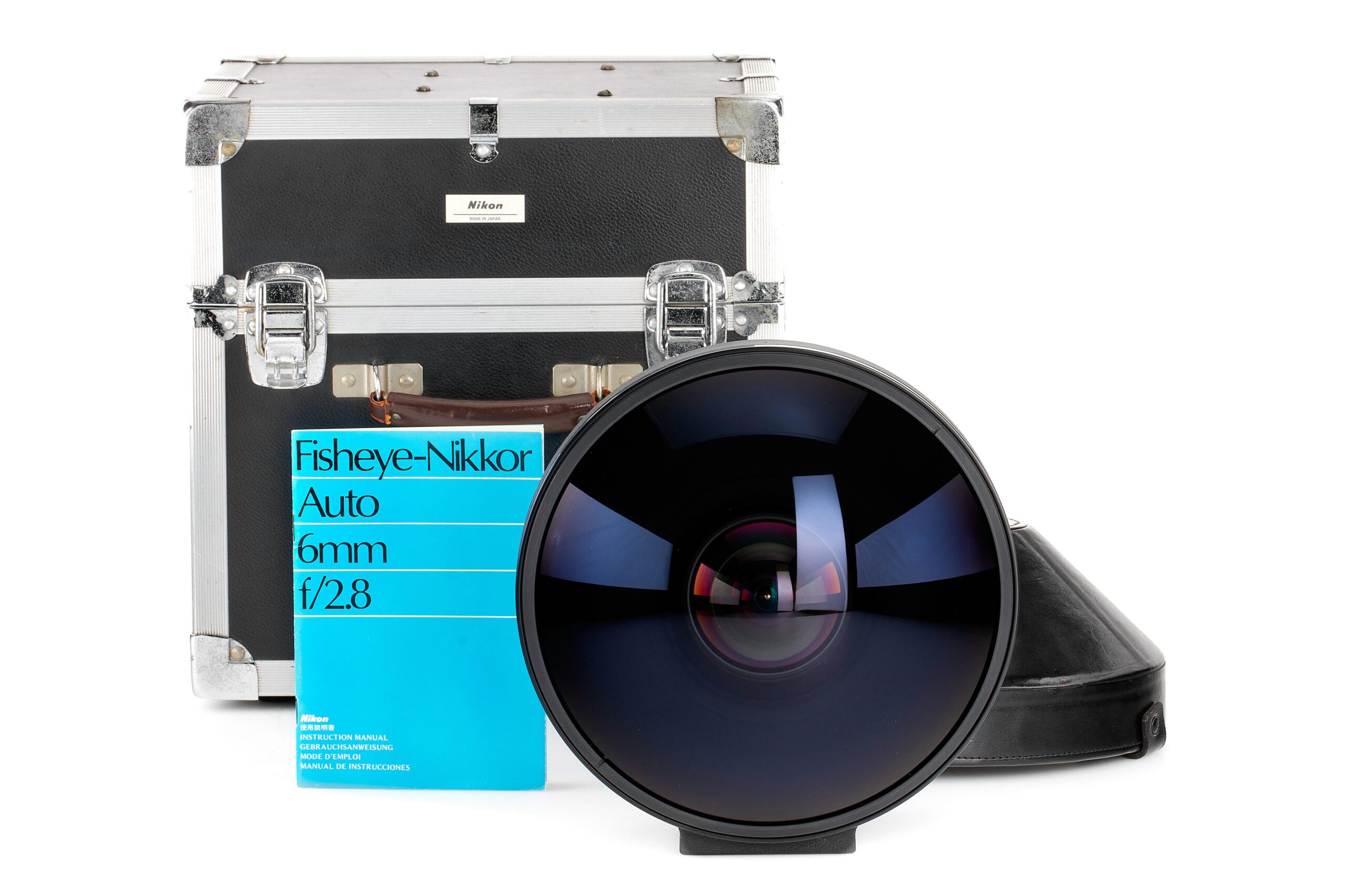
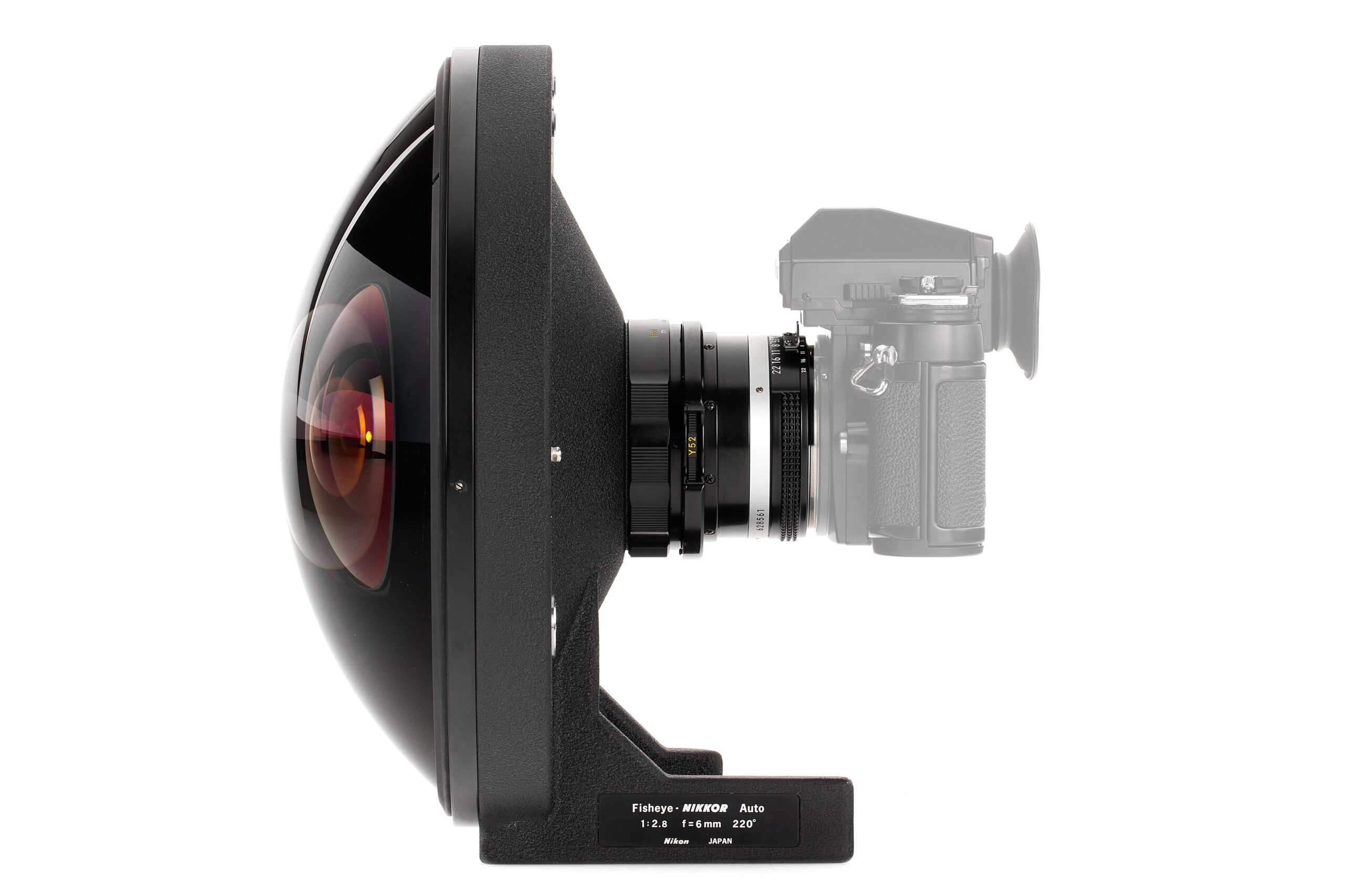
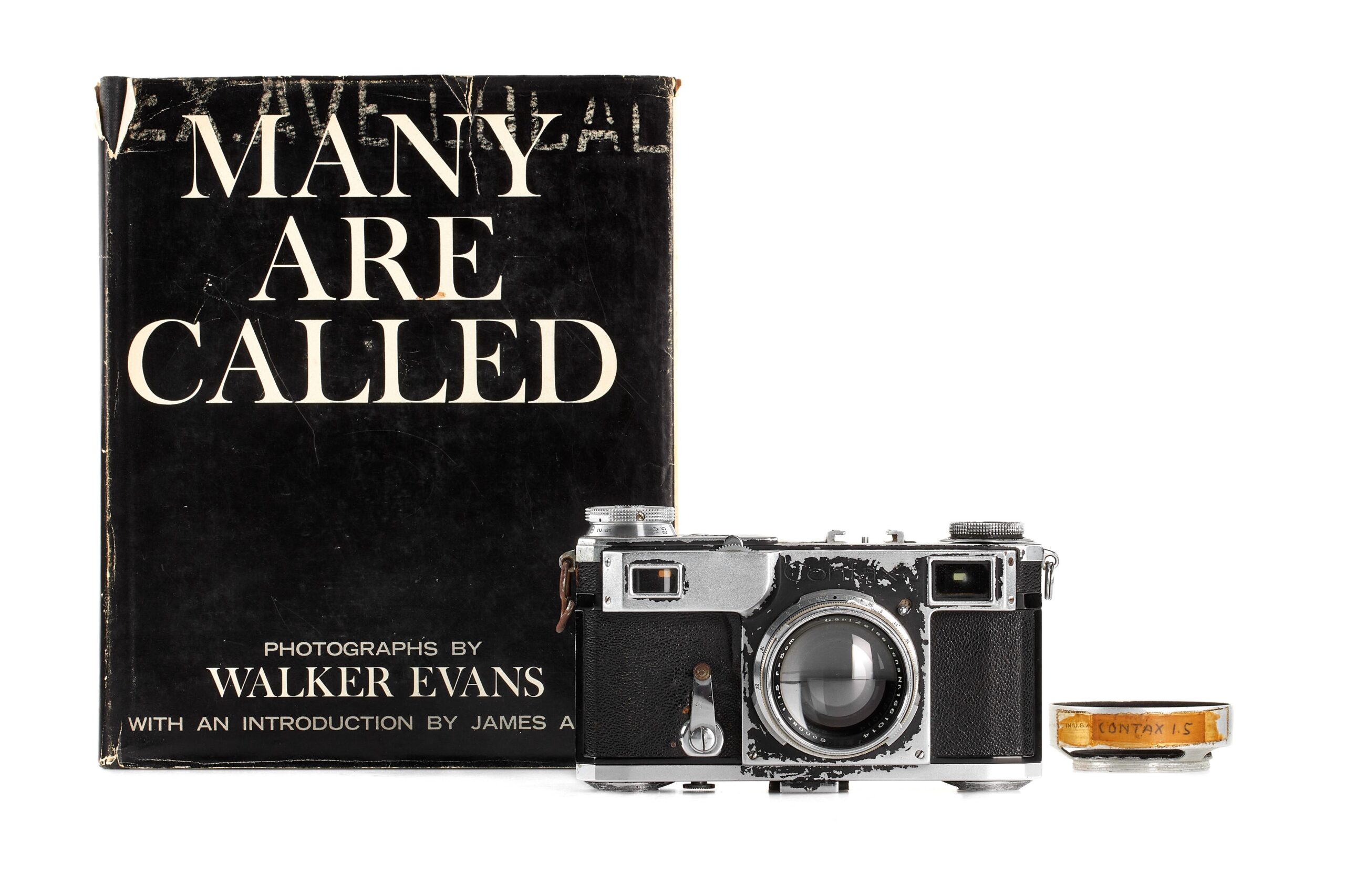
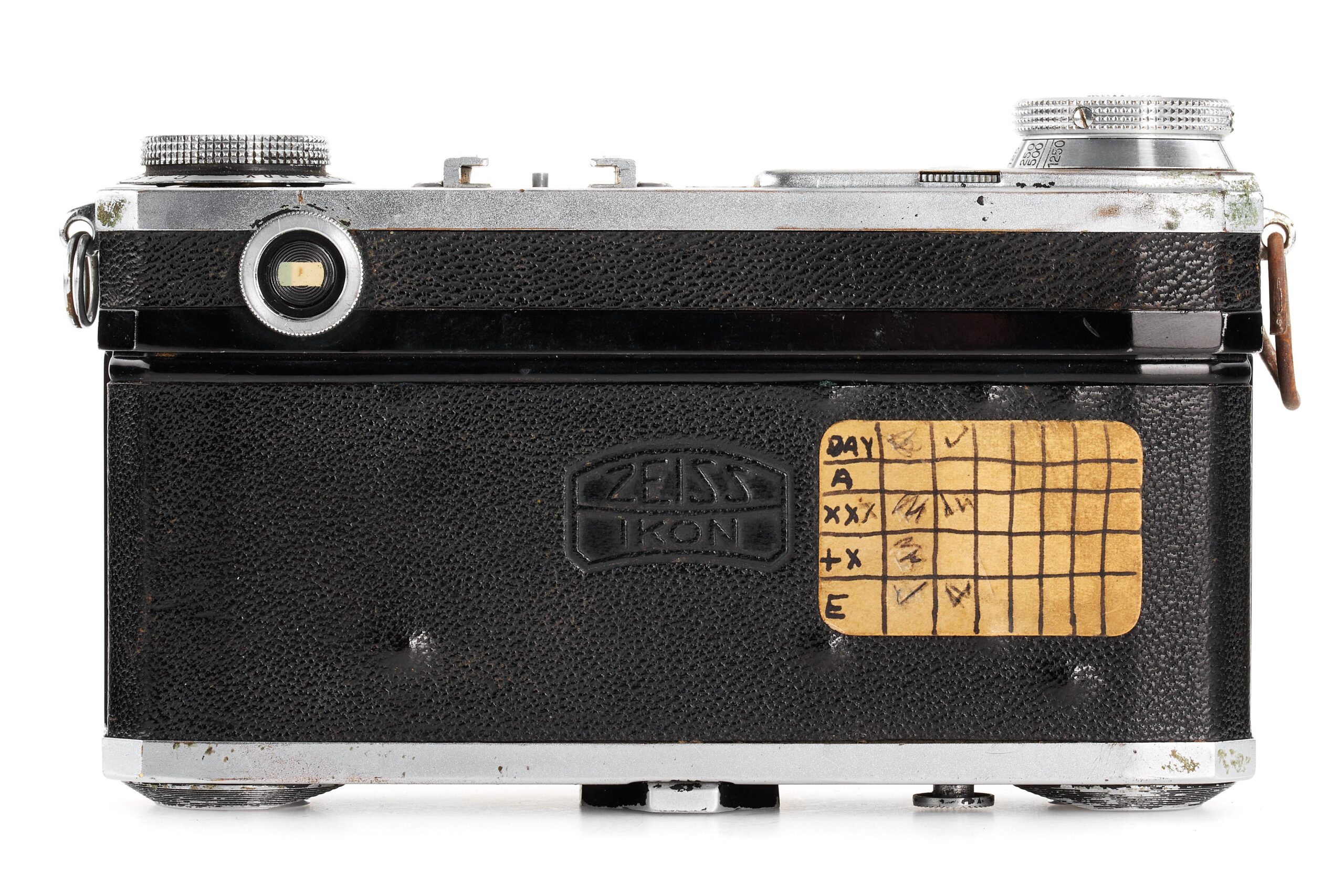
Dear William, this is a great article. It proves that there is more to such auctions than just a commercial aspect. These are cultural events because they bring to light many interesting, fascinating or even historically significant artifacts. As if a museum depot was opened to the public for one day only to be closed again for the years to come. If your articles help to advertise the auction, that may be some collateral use but I know you are looking at the bigger picture. Thanks for sharing your knowledge to us and have a safe journey to Wetzlar and back. JP
Thank you William for another interesting article. Regarding ‘mirror lenses’, they often receive poor reviews from camera / lens reviewers who do not fully understand reflex lenses’ idiosyncrasies. Mirror lenses’ optics need to ‘acclimate’ to ambient air temperature before imaging is optimised. Acclimation can take at least 30 minutes … and often much longer. Many mirror lens reviews / lens tests make no mention of mirror lenses’ “primary mirror acclimation”. Hence quite good or excellent quality mirror lenses can receive poor reviews if tested before acclimation is complete. Astronomers never expect their reflector telescopes to image optimally immediately after setting up … especially if the ‘scope has been stored indoors ‘in the warm’ before setting up outside on a cold / very cold evening. Whilst stored indoors, ‘in the warm’, a reflex lens’ primary mirror, “absorbs and stores heat”. When used outside, that previously absorbed heat energy, ‘radiates’ from the primary mirror … creating ‘thermals’ inside the lens tube. Those waves of thermal energy can degrade / distort the image. During / following ‘acclimation’, temperature equilibrium is reached i.e. the primary mirror’s temperature ‘acclimates’ to that of the ambient air temperature; image degrading ’thermals’ then cease … and imaging is optimised.
Thanks Dunk. I wonder did my friends the Grubbs and other astronomical telescope makers in the 19th Century realise that thing about mirrors and acclimation. The Earl of Rosse who built the world’s largest reflector in the 19th Century (his telescope has featured in one of my Macfilos articles), with the help of Mr Grubb, kept his telescope outdoors all of the time from the 1840s onwards. I don’t think he knew about the acclimation point, he just wanted to build a mighty big telescope, which would not fit indoors.
I only have one mirror photographic lens, a 500mm Nikkor. It was given to me by a friend who had used it in various deserts in the Middle East, including Yemen, and I reckon it has some of the contents of those deserts inside it. He recently donated his photos of Yemen to our National Photographic Archive and I donated his old Nikon F2, which he had used in Yemen and which he had given to me, to go along with the collection of photos. I still have the 500mm Nikkor lens and if I get a chance I will use it some day for some interesting effects. I’ll be disappointed if I don’t get ‘doughnut bokeh’.
William
Hello William, great article as always! On the design study with the vertically travelling shutter, did this anticipate or predate the Copal Leitz shutter? I have never seen the article you pictured and described that will be in the auction. Interesting stuff!
Thanks Bill. This one appeared in the late 1960s, whereas the Leitz Copal shutter appeared on the Minolta XE in the mid 1970s under a cooperation agreement between Leitz and Minolta, which also covered the CL models. I am sure that, Leica being Leica, the research fed in some way into the later shutter designs.
William
Two corrections for the Walker Evans text:
1) It was the Resettlement Administration, not the Reclamation Administration
2) It was the Farm Security Administration, not the Food Security Administration. The Farm Security Administration replaced the Resettlement Administrtion.
Thanks Gordon. I did source this from somewhere. I’d be happy if Mike corrected these.
William
Done – Mike